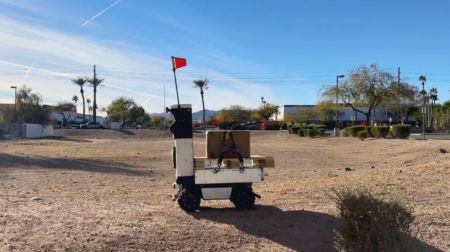In a first, scientists have used robotic drones to discover rare Hawai’ian plants, with help from Outreach Robotics.
Researchers from the National Tropical Botanical Garden (NTBG), Outreach Robotics, and Hawai’is Division of Forestry and Wildlife have discovered a previously unknown cliff-dwelling plant using drones, as well as a robotic collecting arm on Kaua’i island.
The plant, Schiedea waiahuluensis, is a member of the carnation family and one of 36 Schiedea species native to Hawai‛i, 12 of which are found only on Kaua‛i.
In addition, the collection of a tiny native mirid bug, if proven to be a new species, will also be the first collected using a drone.
The discovery of Schiedea waiahuluensis has revealed new possibilities for plant conservation in extreme cliff habitats.
The Mamba has precise GPS-denied sampling, collision recovery, and is adaptable a range of extreme environments.
Ben Nyberg, drone operator for NTCG, said the use of the technology was “a game-changer for extreme cliff habitats.
“We are learning so much about these often overlooked environments with drones and the Mamba robotic arm is assisting plant conservation in ways we never thought possible.”
Warren Wagner, from the Smithsonian Institution, research botanist, and NTBG McBryde chair of Hawaiian Plant Studies, added: “Using drone technology increases [our] chances to better understand the diversity of lineages in Hawai‛i in sheer cliff habitat.
“Moreover, combining drone technology with field collecting and research programmes will decrease the impact on sensitive areas and allow for more effective surveys of invasive species.”
 Join more than 11,000 industry leaders at Robotics and Automation Exhibition on 25-26 March 2025. Explore cutting-edge technologies, connect with peers and discover the latest innovations shaping the future of manufacturing, engineering and logistics. Register now to secure your place at this premier event!
Join more than 11,000 industry leaders at Robotics and Automation Exhibition on 25-26 March 2025. Explore cutting-edge technologies, connect with peers and discover the latest innovations shaping the future of manufacturing, engineering and logistics. Register now to secure your place at this premier event!







